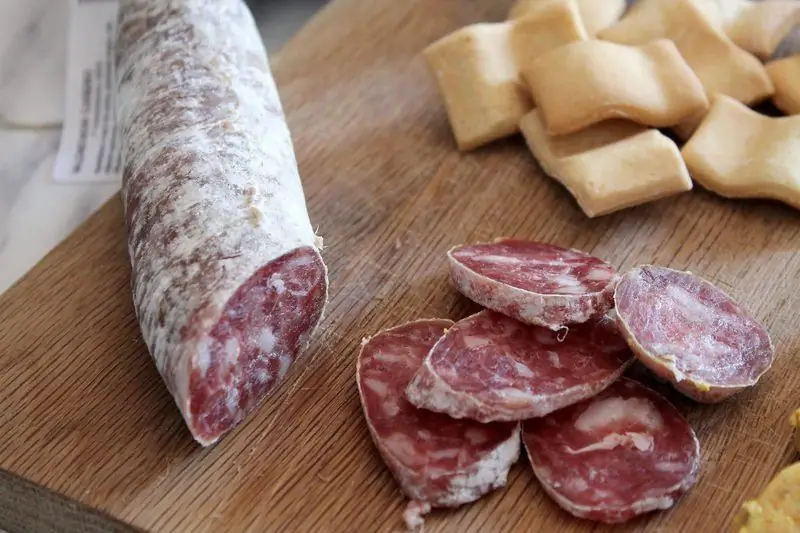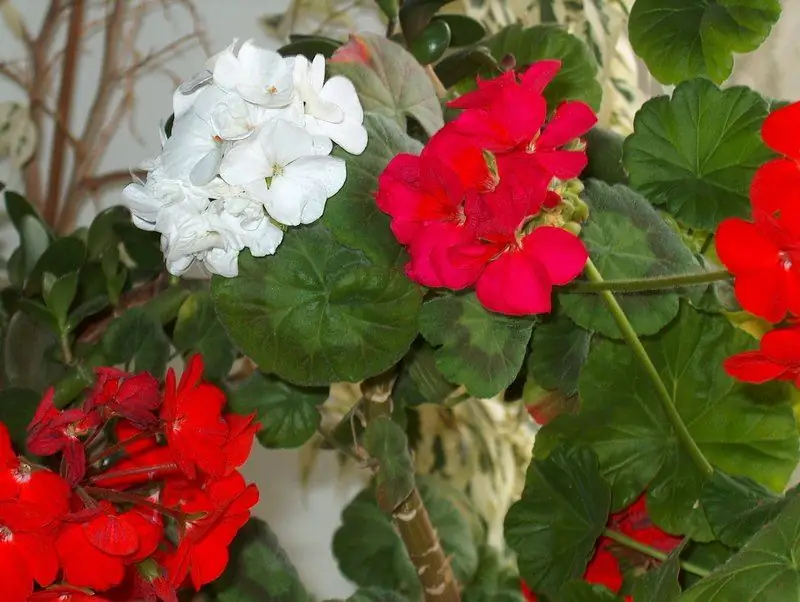
Table of contents:
- Author Bailey Albertson [email protected].
- Public 2023-12-17 12:53.
- Last modified 2025-06-01 07:32.
Peonies do not bloom: what could be the reason

Peony is a relatively unpretentious plant, but it also requires moderate care, for which it pleases the owner with lush flowering for many years. However, in some cases, the bush refuses to bloom, and there are many reasons for this phenomenon. Often, a peony can and should be helped to resume flowering.
Why peonies don't bloom
All the reasons why peonies do not bloom can be reduced to three large groups:
- weakened bush;
- weather;
- diseases, pests.
If you look deeper, there can be more than a dozen reasons, and most often the following are found.
Incorrect fit
Correct planting is the key to long life and successful flowering of a peony. It requires a lot of nutrients, so a pit is prepared for planting, almost like for a fruit tree. It should be at least 70-80 cm in all dimensions, very well fertilized. A drainage layer must be present at the bottom (any pebbles, gravel, coarse sand - at least 15 cm). As fertilizers, both organic and mineral compounds are used, not forgetting to throw a spoonful of ferrous sulfate or simply burying an old tin can.
The most important thing is the planting depth. Renewal buds should be sunk into the ground by 3-7 cm. With a deeper planting, the peony will never bloom! Conversely, a shallow planting weakens the bush, it often gets sick, as a result of which flowering also remains in question. In addition, when planting, you cannot plant very large divisions (optimal - 3-5 large buds of renewal and the same number of adventitious roots).

The correct planting depth is the key to the flowering of a peony
Wrong location
The location of the bush is easier. The most lush flowering is observed in the sun, but in the southern regions the flowers can fade at the same time, so it is advisable to choose a site where the bush will be in the shade during the hottest hours. Drafts are contraindicated for a peony. And the nearby groundwater is completely destructive. In extreme cases, the bush is planted on an artificial mound. In addition, the peony may not bloom due to too acidic soil. Therefore, when planting, you need to pay attention to this and, if necessary, carry out liming.

Peonies need sun, but sometimes they like to be in the shade of the house.
Lack or excess of nutrients
Even with a good filling of the planting pit, peonies, starting from the second or third year of life, require additional feeding. In early spring, they are given nitrogen fertilizers, a little later they are fed with full mineral fertilizers (for example, nitrophos), during the period of mass bud formation, they are treated with wood ash, and this procedure is repeated after the last flower withers.
At the same time, when applying fertilizers, you should not overdo it with nitrogen. Too much of this element leads to lush bushes with a lot of large leaves, but the bush refuses to plant buds.
Lack of moisture
Peonies cannot be called waterlogs (they cannot cope with stagnant water in the soil), but they need regular and abundant watering. Especially the need for water increases during preparation for flowering. In the absence of rains at this time, twice a week, up to three buckets of water should be poured under an adult bush.

Adult bushes are watered even with sprinkling, but water getting on the buds, and even more so on the flowers, is very undesirable
Flowering may also be absent due to last year's too dry autumn. Peonies also need water in August-September, when the bushes are preparing for winter. If a florist forgets about his pets, he may lose the flowering of peonies next year.
The impatience of the grower
Often an inexperienced florist, having seen the buds in the second year after planting a peony, tries to preserve them in order to admire the flowers as soon as possible. In no case should this be done. In the first two years, the bush is still weak and not ready to bloom. Even if he "foolishly" will give out several buds, they must be cut off as soon as possible, allowing the plant to develop. If a very young bush blooms, he may refuse to do so in the future.
Another bad habit of an inexperienced grower can be attributed to the same category: often, without waiting for flowering, he tries to transplant the bush as soon as possible. If the planting is carried out correctly, the peony should not be touched for five years: with impeccable care, it will surely bloom, and then for at least the same number of years it will delight the owner with lush flowering. It happens, on the contrary, that a peony stops blooming from old age, but for this it must be much more than ten years old, and in this case, a transplant with a division of the bush is required.

At the end of summer, old bushes are dug up and divided into parts, the best of which are planted in a new place
Rainy weather during bud formation
Prolonged, heavy rains that come during the budding period can ruin them. When soaked in water, the buds can simply rot, in which case various fungal diseases also join.
Often the formed buds also destroy recurrent frosts. Even a few degrees below zero can freeze the buds, and this year there will be no flowering (this process will not affect the future life of the bush).
Incorrect cutting of flowers
When making bouquets, you shouldn't be greedy. In no case do not cut off all the flowers from the bush! For the normal continuation of the growing season, it is customary to leave at least a quarter of the flowers on the bushes, allowing them to naturally wither and form fruits. In addition, when cutting flowers, it is imperative to leave in place a part of the stem with at least a couple of leaves. Pruning bushes too early can also lead to a lack of flowering next year: the stems are cut only in late autumn, just before wintering.

Cut off the stems almost at the ground, but at the latest dates
Diseases, pests
Sometimes the buds are gnawed by ants, but this is only with a massive invasion. Nevertheless, ants must be fought. Much more dangerous than nematodes: these microscopic worms can not only deprive a peony of flowering, but also destroy the bush. Bears are also capable of gnawing rhizomes.
Among the diseases, Fusarium is considered the most dangerous. At the same time, the rhizome rots, you cannot count on flowering. With any suspicion of illness, it is customary to immediately use Bordeaux liquid (it will not be superfluous), and then more subtly deal with the diagnosis.

Even with most leaf diseases, peonies are no longer up to flowering.
How to help peonies and achieve flowering
To fix the situation, you need to know the reason. In the case of too deep planting, the bush will have to be transplanted, although a more gentle procedure can help for young plants: using a shovel or a crowbar, a slightly dug bush can be lifted by adding the required amount of soil under it. If a ten-year-old bush has stopped blooming, there is nothing to think about, it's time to dig it up, divide it into parts and transplant it. It is better to do this at the very end of summer.
Non-blooming in the current season can no longer be corrected, but you can almost always return flowers to the next summer. First of all, you should adjust the mode of watering and fertilizing. It is necessary to water not only under the bush itself, it should be borne in mind that the roots of the peony extend almost a meter to the sides, and this entire area should be watered moderately. For the winter, after cutting the aboveground part, the rhizomes should be insulated by pouring a good layer of mulching material, but in early spring it must be removed so that the waking bush does not have time to feel excessive deepening.
Video: the variety of reasons for the poor flowering of peonies
The lack of flowering in peonies is quite common, but in most cases it is associated with improper agricultural technology. And if you usually can't do anything with the vagaries of the weather, you can and should take proper care of the plant, and the flowers will definitely appear.
Recommended:
Why Kalanchoe Does Not Bloom And What To Do About It

Why Kalanchoe does not bloom at home. Proper care for flowering
White Bloom On Raw Smoked Sausage: Why It Appears, Is It Possible To Eat The Product

White bloom on raw smoked sausage: what it is, why it appears, the norm or not. How to distinguish white plaque from mold, whether it is necessary to remove it
Whiskers In Cats And Cats: What Are They Called Correctly And Why They Are Needed, What Will Happen If You Cut Them And Why They Fall Out Or Become Brittle

Features of the structure of the mustache in cats. What are they called and where they are located. What functions do they perform. What problems can a cat with a mustache have? Reviews
Why Geraniums Don't Bloom And What To Do To Help The Flower

For what reasons can geraniums refuse to bloom? How to create the necessary conditions for her. Is it easy to help a plant to bloom
Why Roses Don't Bloom And How To Help Plants, Reviews

Why roses may not bloom, on what it depends. How to help them. Reviews
